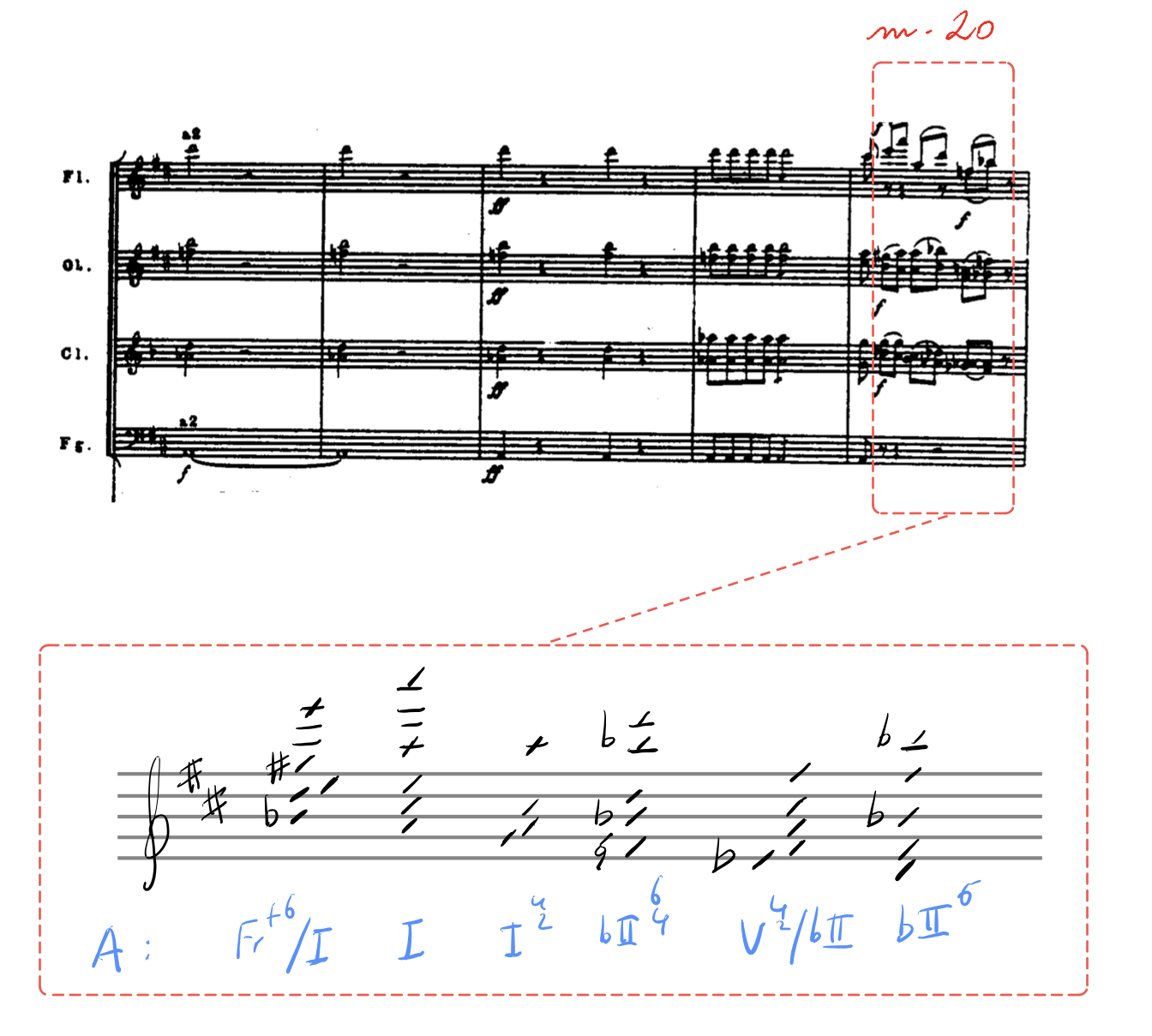It's cool that the soprano line implies a sequence of V-I relationships but the harmonization is funky. You could argue that the first chord is really a V7(♭5) in second inversion. And the third chord in your analysis should be V^4/2^/IV, which makes a deceptive resolution to the N^6/4^.
Music Theory
A community to discuss the technical workings of music.
Helpful symbols, for copy-pasting into comments
♯ ♮ ♭ 𝄪 𝄫 ø ° Δ ♩ ♪ ♫ ♬ 𝄐 𝄑 𝄞 𝄢 𝄡 𝆒 𝆓 𝄀 𝄁 𝄂 𝄃 𝄆 𝄇
#Rules
1. Stay on topic. All posts must relate to music theory.
2. Civility. Disagreements and discussion are great, but hostility, insults, and so on aren't. Any critiques should be focused on ideas, never on individual users.
3. No homework help on specific assignments. It is against the Academic Honesty Policy of most schools and courses. Our subscribers generally dislike this kind of behavior. Please ask your IRL teacher/tutor for homework help instead. It's important that we get such posts taken down ASAP, so in addition to reporting, please report such posts.
4. Don't make this place annoying. Memes and so forth are fine, but mods reserve the right to remove inappropriate or overposted material.
5. Promotion. Promotion of one's content is allowed, provided it is not excessive or mindless. If you regularly post your content but do not otherwise interact with the community, you will be banned. If you link to something that costs money, you must say so in your post.
#Related communities:
- Composer
- Song-a-Week
- Musicology
- Ethnomusicology
- Historically Informed Performance Practice (HIPP)
- Piano Discussion
- Classical Music
- Jazz
- Harpsichord
Regarding moderation and reporting: https://join-lemmy.org/docs/users/04-moderation.html
